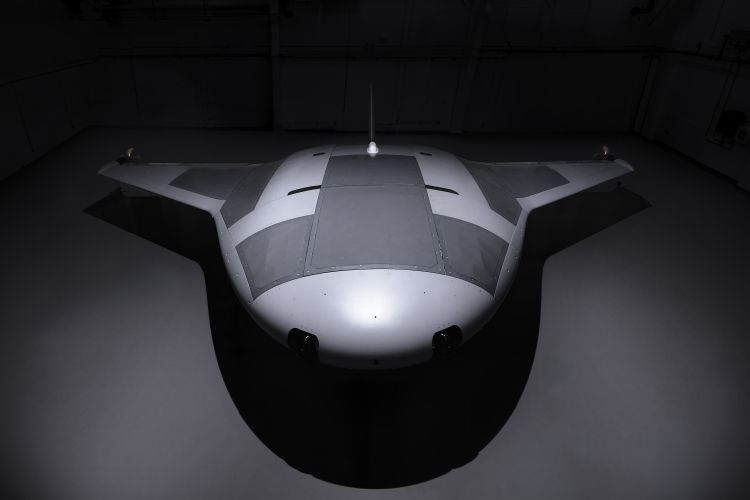
Unmanned systems are increasingly part of maritime defense, but integrating remote air, surface and undersea capabilities into fields of operation requires new thinking and a whole lot of trust, military leaders and experts said at Sea-Air-Space 2024.
“In force fleet, we really try to move from experiments to operationalizing,” said Rear Admiral James Aiken, commander of U.S. Naval Forces Southern Command and commander, U.S. 4th Fleet. “And then we also want to go from the tactical — from those simple functions that we talk about — to the operational.”
Aiken spoke at a panel of senior and retired military leaders from the Navy, Marine Corps, U.S. Coast Guard and private industry.
Moderating the panel was Bryan Clark, senior fellow and director at the Hudson Institute, a naval operations expert and co-author of the study, “Unalone and Unafraid: A Plan for Integrating Uncrewed and Other Emerging Technologies into US Military Forces.”
Clark and co-author Dan Patt argued in the paper the Navy could use “AI-enabled uncrewed vehicles” to gain and sustain operational advantage against a great-power rival like China. “The ability of uncrewed systems to provide resilience and adaptability depends on scale,” Clark and Patt wrote in the paper, published last year.
The Navy described its vision for integrating unmanned aerial systems, ships and undersea vehicles into the fleet and fleet marine force in the “Advantage at Sea” strategy and the follow-on “Unmanned Campaign Framework,” released in 2001. But, as a 2022 U.S. Naval Institute article argued, Congress is unlikely to fund these vehicles unless the Navy develops a more complete conception of their use across conflicts.
That work is ongoing, panel speakers indicated.
Rear Admiral Kevin Smith, Program Executive Officer of Unmanned and Small Combatants with Naval Sea Systems Command, said his office is supporting Navy efforts by designing, developing, building and modernizing unmanned systems. These include unmanned maritime systems and mine and expeditionary warfare systems. Areas of study and experimentation focus on mechanical and electrical systems, autonomy, interoperability and more.
“Obviously a lot of data is being gathered,” Smith said, which can be used to improve the systems and define their requirements for acquisition. And this applies to large unmanned system as well as medium and small systems.
“Taking the Sailor out of harm’s way isn’t very important — it’s paramount,” Smith said.
Aiken said getting these tools more quickly into a battlefield environment requires less testing and more operations. He said this has involved “putting unmanned vessels into the hands of operators” and “testing our assumptions” on how the Navy deploys, positions and otherwise uses them.
Aiken said the goal is to combine manned and unmanned systems, and to stack unmanned systems, “which I call the Reese’s effect, where we’re putting peanut butter and chocolate together,” he said. He cited the use of unmanned surface vessels with communications balloons as part of a mesh network.
Retired Rear Admiral John Tammen, deputy of the Undersea Enterprise Campaign for the Northrop Grumman Mission Systems Sector, said he sees three broad areas of opportunities to further the Navy’s efforts in this area:
• First, there are more players on the field from private industry. Tammen said a brief walk through the Sea-Air-Space exhibit hall showed the array of firms either operating their own vehicle or supporting their components. “That was very exciting to see and I think we need to support that,” he said.
• Two, the evolution of using unmanned systems in capacities beyond surveillance to man-unmanned operations. “The example I like to use is the P-8 tied to the Triton,” he said. “Being able to get something that’s greater than the sum of the parts — one plus one equals three.”
• Three, the increasing ability to get significant payload far forward, from undersea, Tammen said, as has been demonstrated in the DARPA-Northrop Grumman Manta Ray UUV program and others.
In fact, unmanned systems that are contractor-owned and operated appeal to the U.S. Coast Guard, which has a smaller budget and less acquisition, said Thom Remmers, Systems Strategic Team Lead and Naval Engineer and Acquisition Program Manager.
Aiken said at the end of the day, a lot of success involves building service members’ trust in unmanned systems — not for use in a lab but in the real world.






